Abstract
A number of techniques were tested for their efficiency in extracting adenosine 5′-triphosphate (ATP) from strained rumen fluid (SRF). Extraction with 0.6 N H2SO4, using a modification of the procedure described by Lee et al. (1971), was the most efficient and was better suited for extracting particulate samples. Neutralized extracts could not be stored frozen before assaying for ATP because large losses were incurred. The inclusion of internal standards was necessary to correct for incomplete recovery of ATP. The ATP concentration in rumen contents from a cow receiving a ration of dried roughage (mainly alfalfa hay) ranged from 31 to 56 μg of ATP per g of contents. Approximately 75% of the ATP was associated with the particulate material. The ATP was primarily of microbial origin, since only traces of ATP were present in the feed and none was found in “cell-free” rumen fluid. Fractionation of the bacterial and protozoal populations in SRF resulted in the isolation of an enriched protozoal fraction with a 10-fold higher ATP concentration than that of the separated rumen bacteria. The ATP pool sizes of nine functionally important rumen bacteria during the exponential phase of growth ranged from 1.1 to 17.6 μg of ATP per mg of dry weight. This information indicates that using ATP as a measure of microbial biomass in rumen contents must be done with caution because of possible variations in the efficiency of extraction of ATP from rumen contents and differences in the concentration of ATP in rumen microbes.
Full text
PDF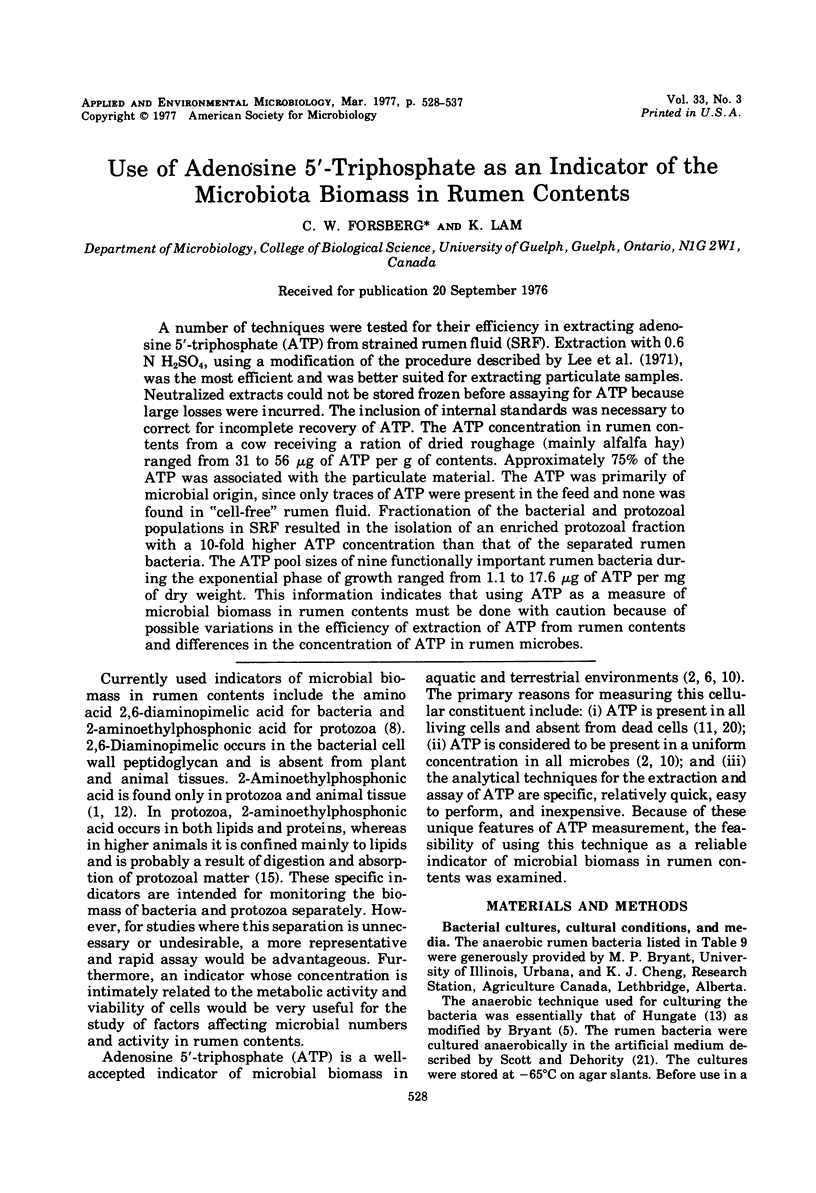
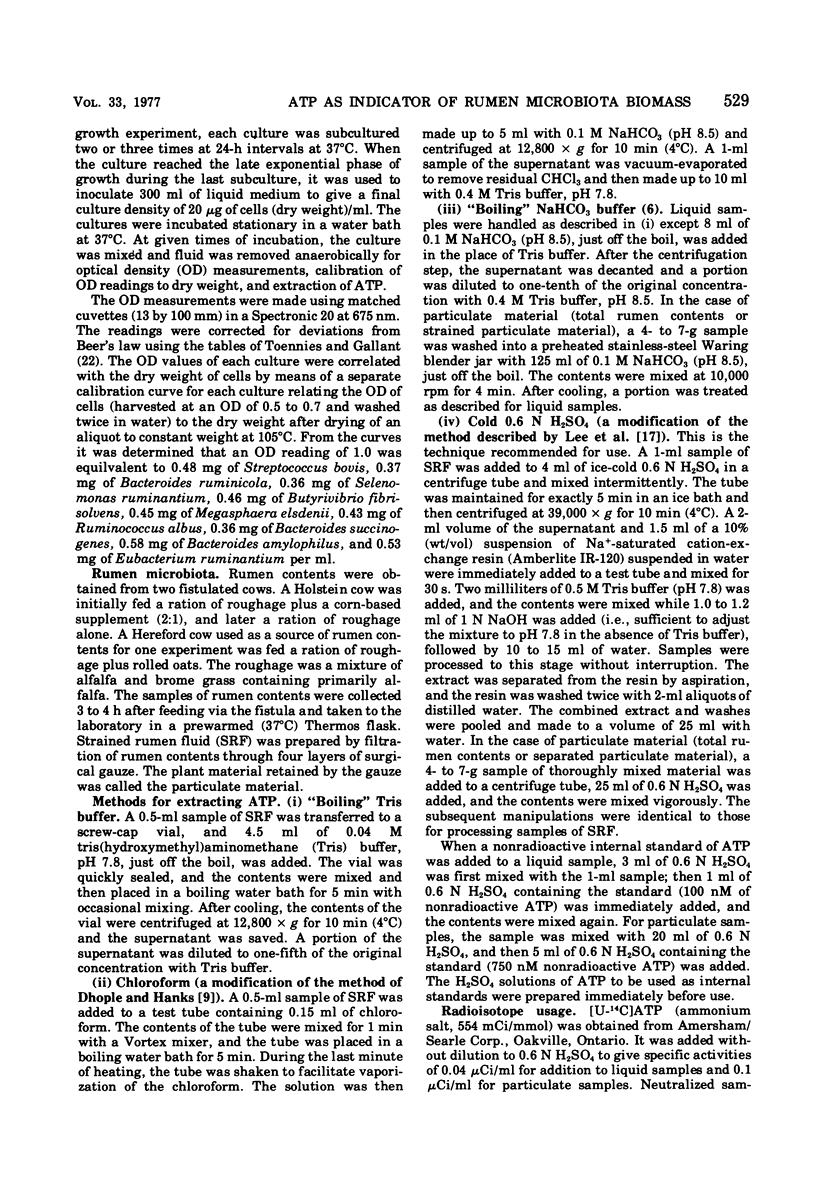
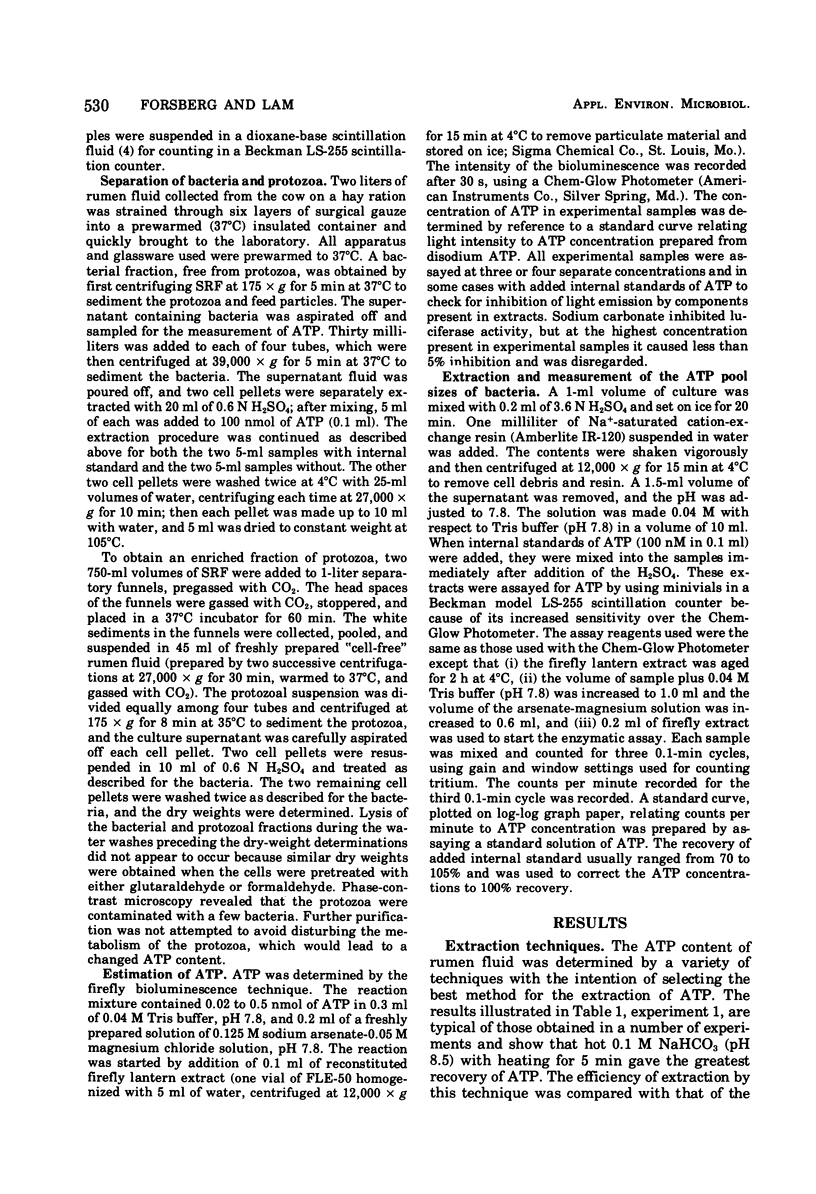
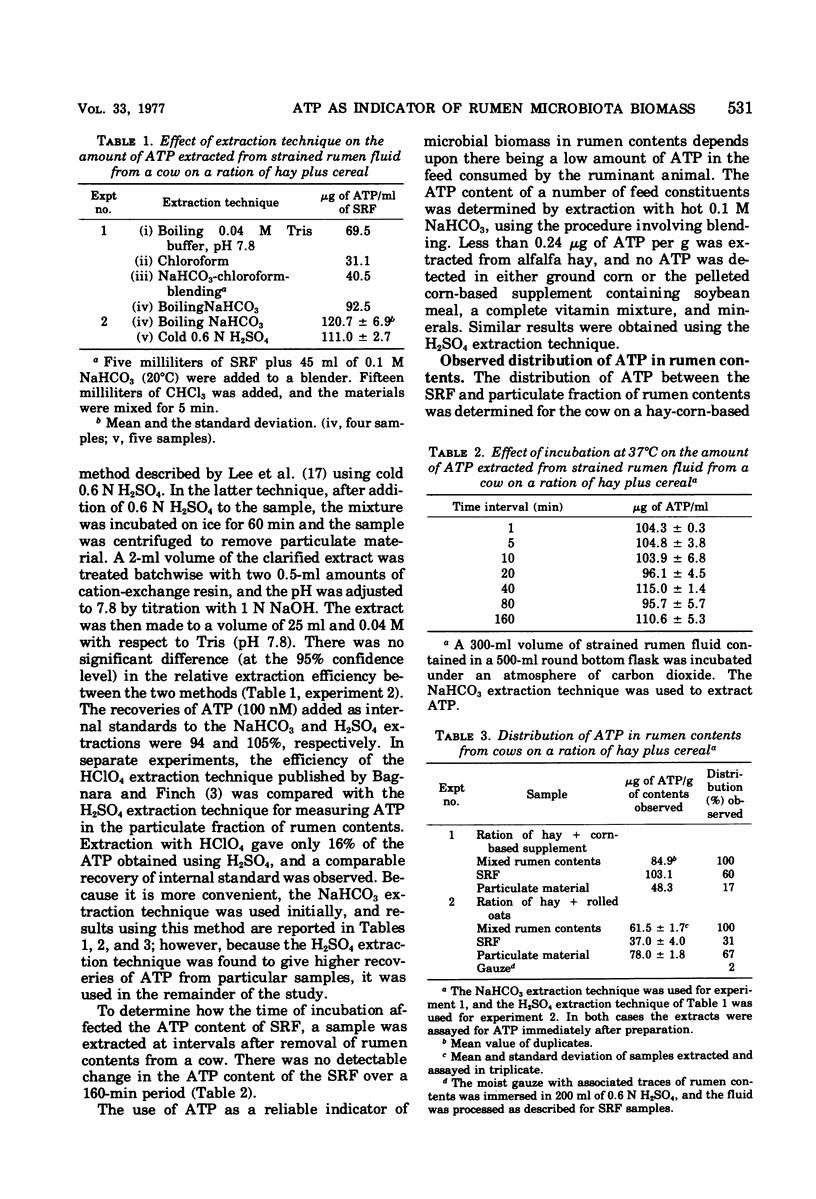
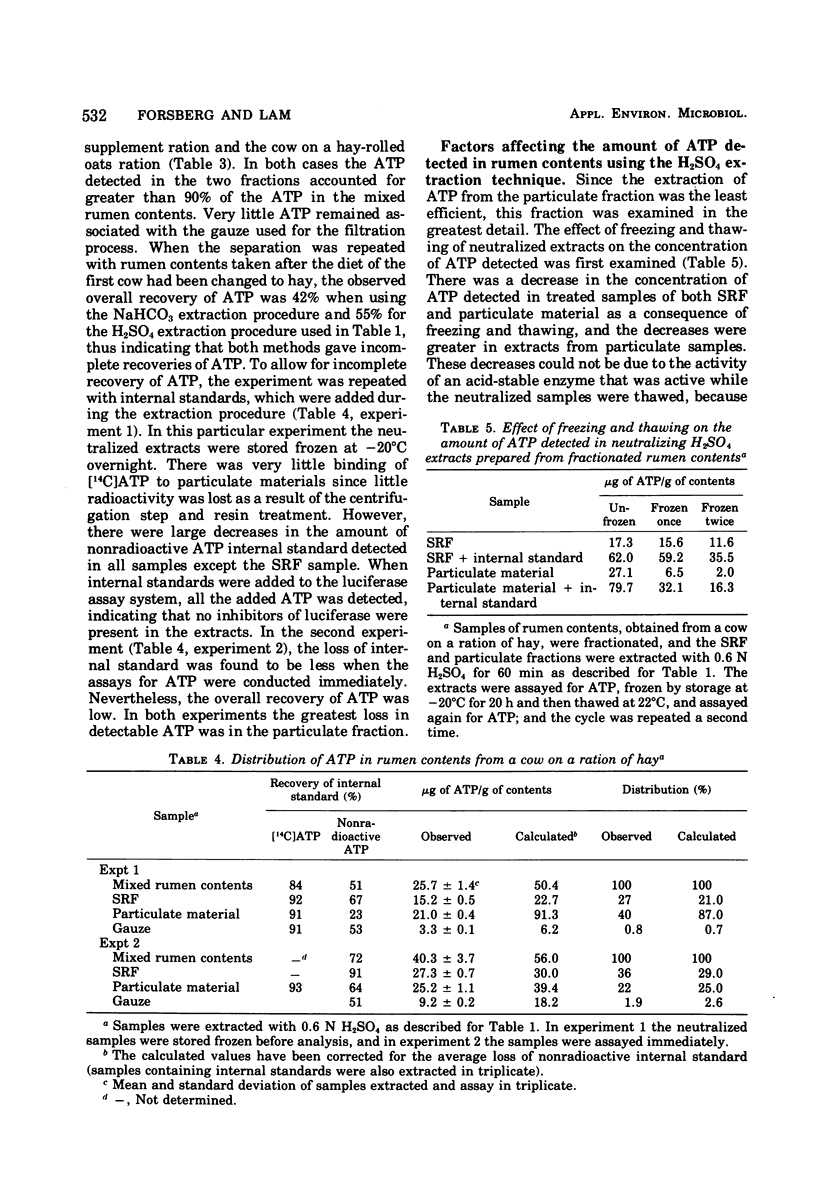
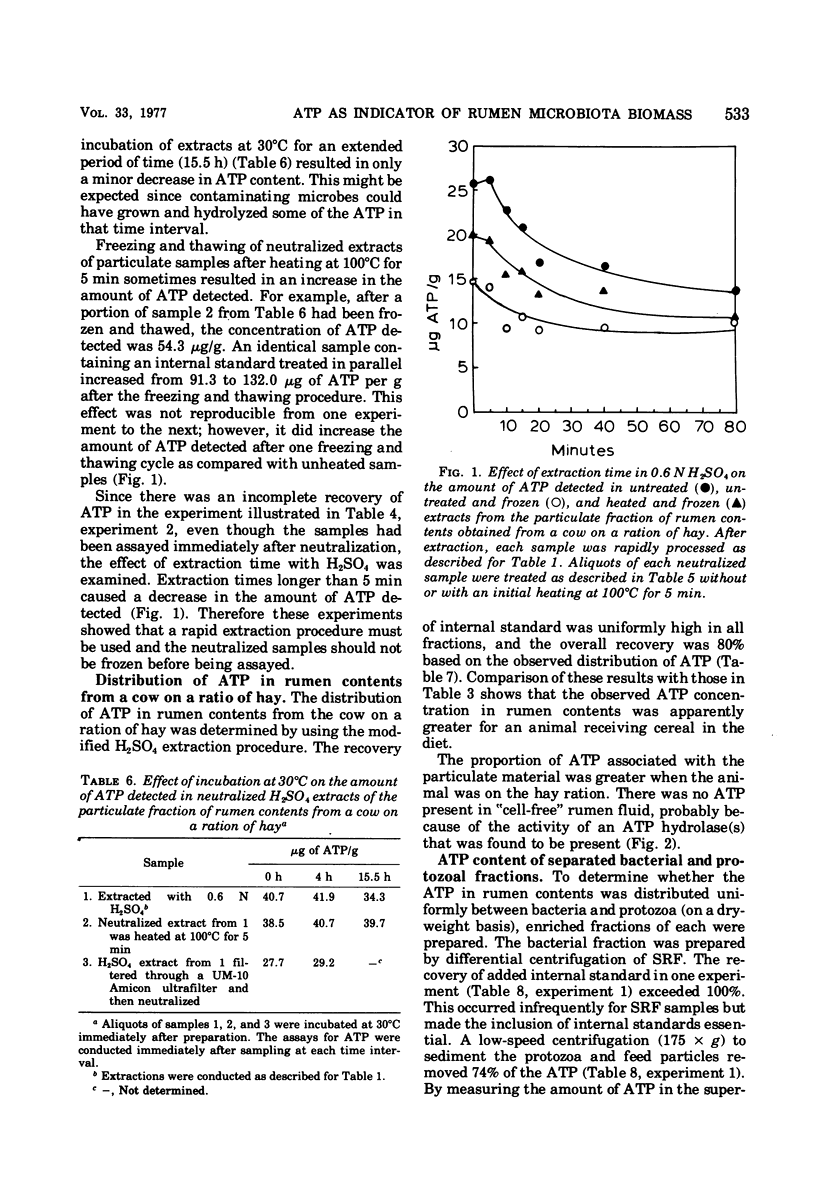
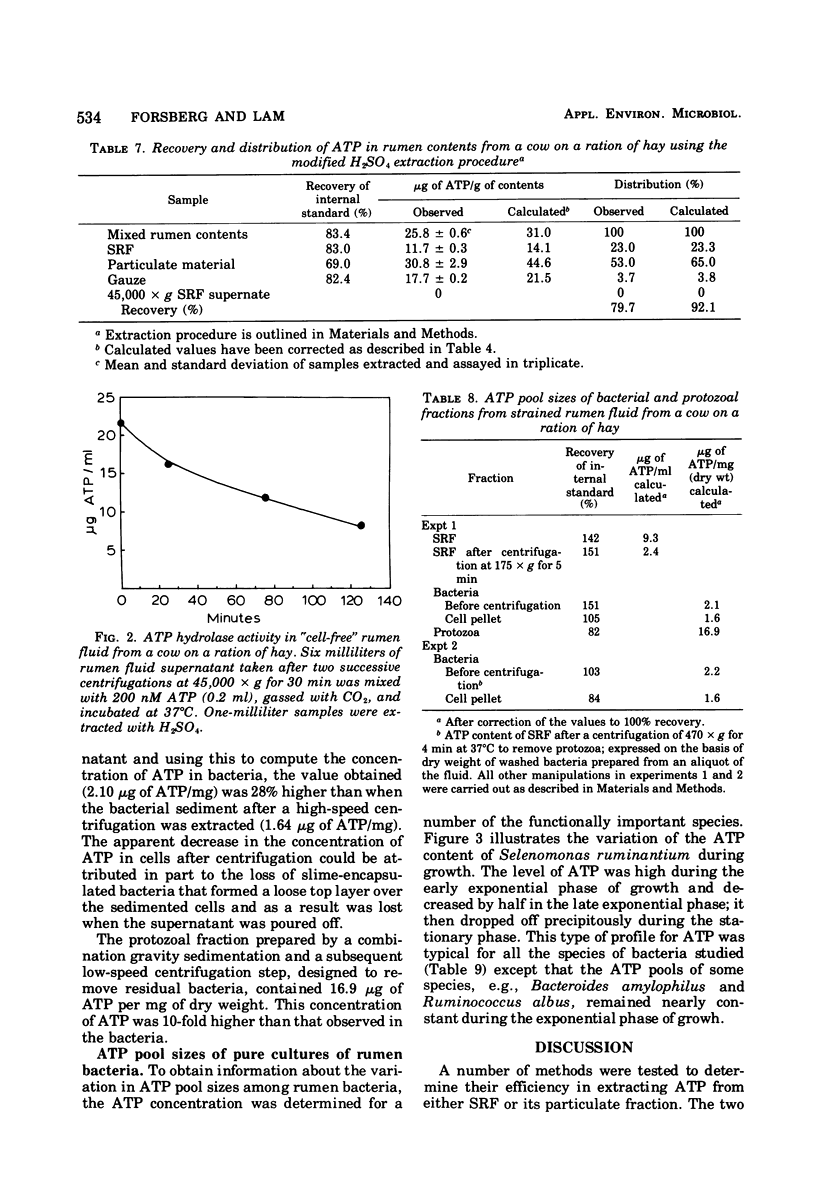
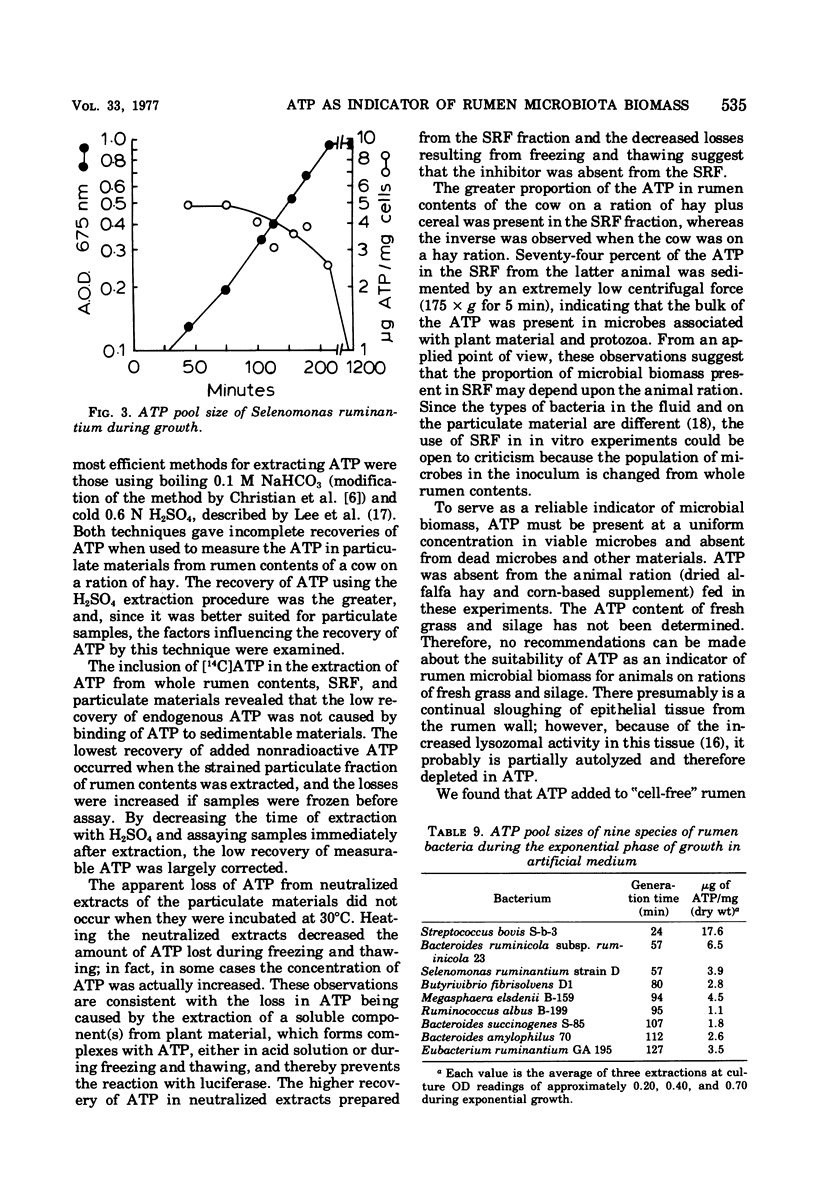
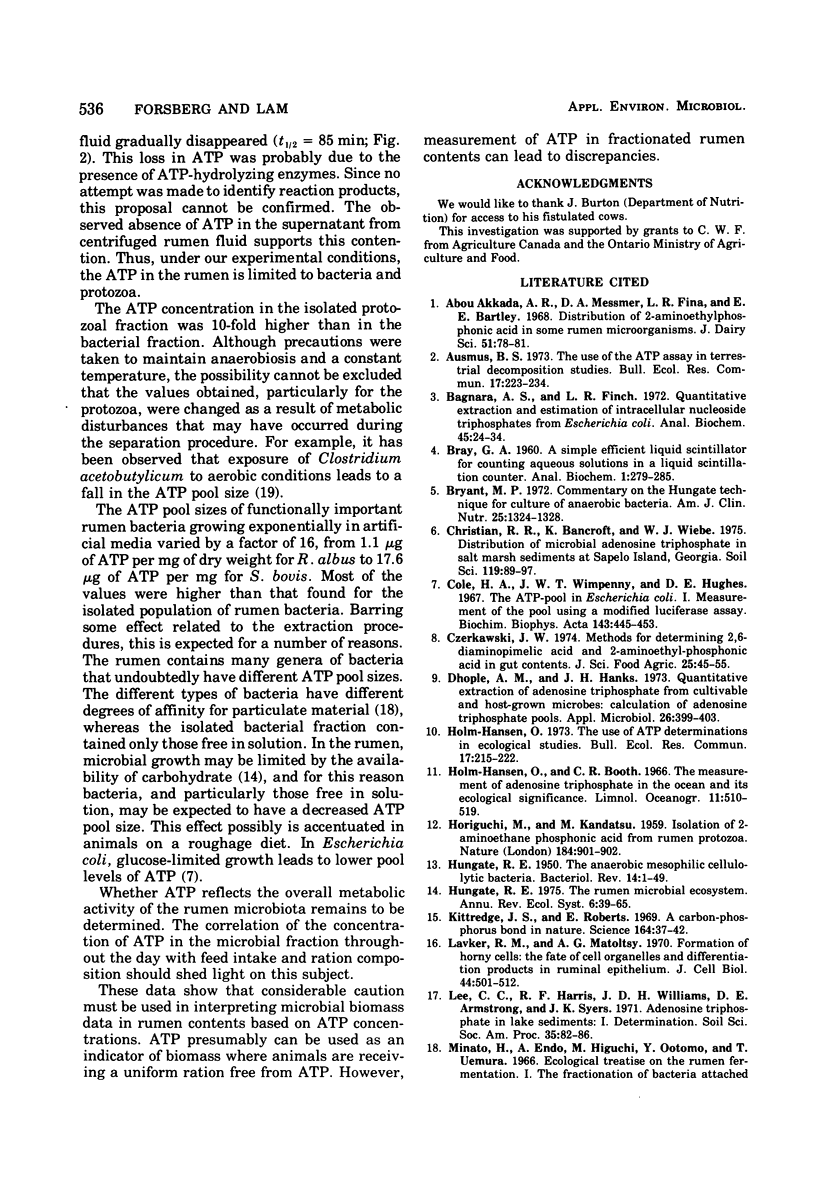

Selected References
These references are in PubMed. This may not be the complete list of references from this article.
- Bagnara A. S., Finch L. R. Quantitative extraction and estimation of intracellular nucleoside triphosphates of Escherichia coli. Anal Biochem. 1972 Jan;45(1):24–34. doi: 10.1016/0003-2697(72)90004-8. [DOI] [PubMed] [Google Scholar]
- Bryant M. P. Commentary on the Hungate technique for culture of anaerobic bacteria. Am J Clin Nutr. 1972 Dec;25(12):1324–1328. doi: 10.1093/ajcn/25.12.1324. [DOI] [PubMed] [Google Scholar]
- Cole H. A., Wimpenny J. W., Hughes D. E. The ATP pool in Escherichia coli. I. Measurement of the pool using modified luciferase assay. Biochim Biophys Acta. 1967;143(3):445–453. doi: 10.1016/0005-2728(67)90050-3. [DOI] [PubMed] [Google Scholar]
- Czerkawski J. W. Methods for determining 2-6-diaminopimelic acid and 2-aminoethylphosphonic acid in gut contents. J Sci Food Agric. 1974 Jan;25(1):45–55. doi: 10.1002/jsfa.2740250106. [DOI] [PubMed] [Google Scholar]
- Dhople A. M., Hanks J. H. Quantitative extraction of adenosine triphosphate from cultivable and host-grown microbes: calculation of adenosine triphosphate pools. Appl Microbiol. 1973 Sep;26(3):399–403. doi: 10.1128/am.26.3.399-403.1973. [DOI] [PMC free article] [PubMed] [Google Scholar]
- HORIGUCHI M., KANDATSU M. Isolation of 2-aminoethane phosphonic acid from rumen protozoa. Nature. 1959 Sep 19;184(Suppl 12):901–902. doi: 10.1038/184901b0. [DOI] [PubMed] [Google Scholar]
- HUNGATE R. E. The anaerobic mesophilic cellulolytic bacteria. Bacteriol Rev. 1950 Mar;14(1):1–49. doi: 10.1128/br.14.1.1-49.1950. [DOI] [PMC free article] [PubMed] [Google Scholar]
- Kittredge J. S., Roberts E. A carbon-phosphorus bond in nature. Science. 1969 Apr 4;164(3875):37–42. doi: 10.1126/science.164.3875.37. [DOI] [PubMed] [Google Scholar]
- Lavker R. M., Matoltsy A. G. Formation of horny cells: the fate of cell organelles and differentiation products in ruminal epithelium. J Cell Biol. 1970 Mar;44(3):501–512. doi: 10.1083/jcb.44.3.501. [DOI] [PMC free article] [PubMed] [Google Scholar]
- O'Brien R. W., Morris J. G. Oxygen and the growth and metabolism of Clostridium acetobutylicum. J Gen Microbiol. 1971 Nov;68(3):307–318. doi: 10.1099/00221287-68-3-307. [DOI] [PubMed] [Google Scholar]
- SCOTT H. W., DEHORITY B. A. VITAMIN REQUIREMENTS OF SEVERAL CELLULOLYTIC RUMEN BACTERIA. J Bacteriol. 1965 May;89:1169–1175. doi: 10.1128/jb.89.5.1169-1175.1965. [DOI] [PMC free article] [PubMed] [Google Scholar]


